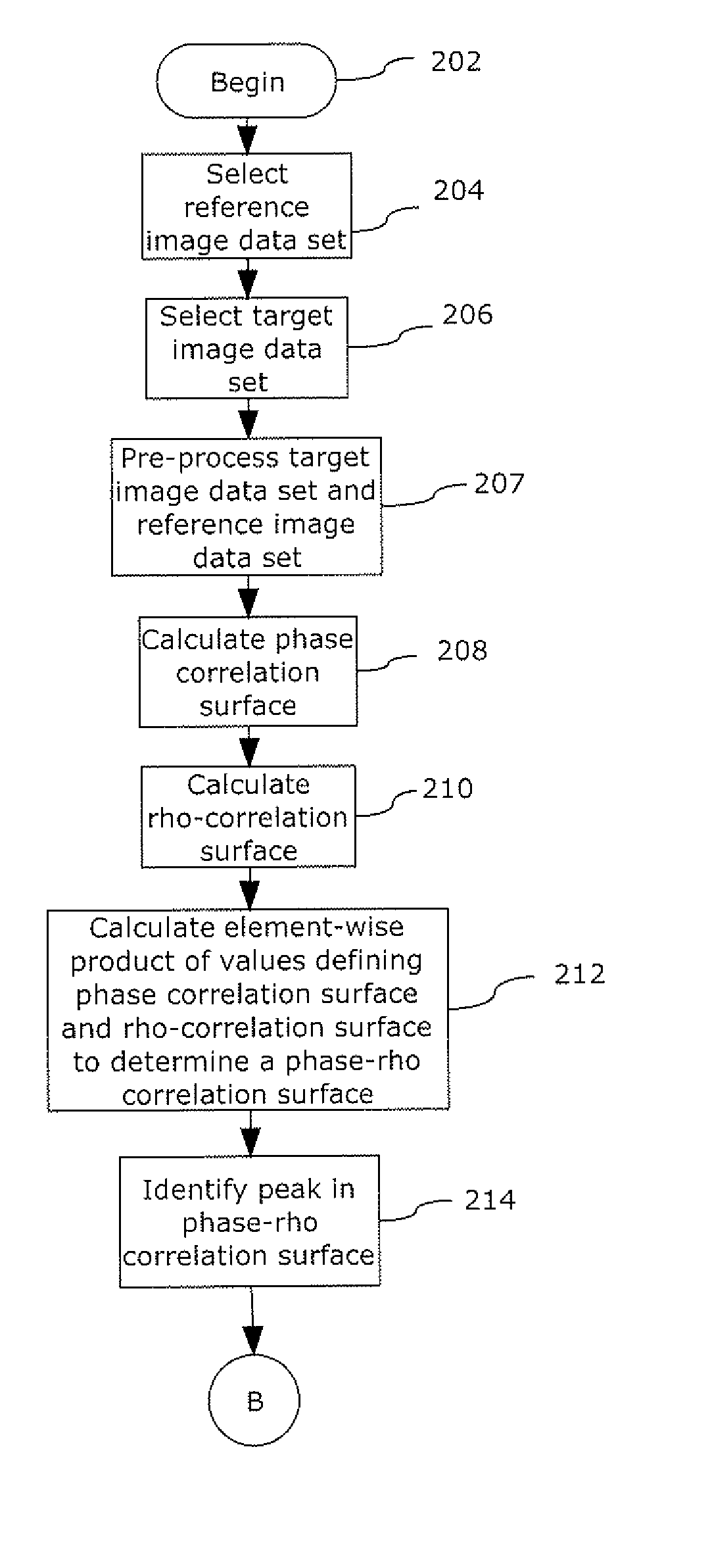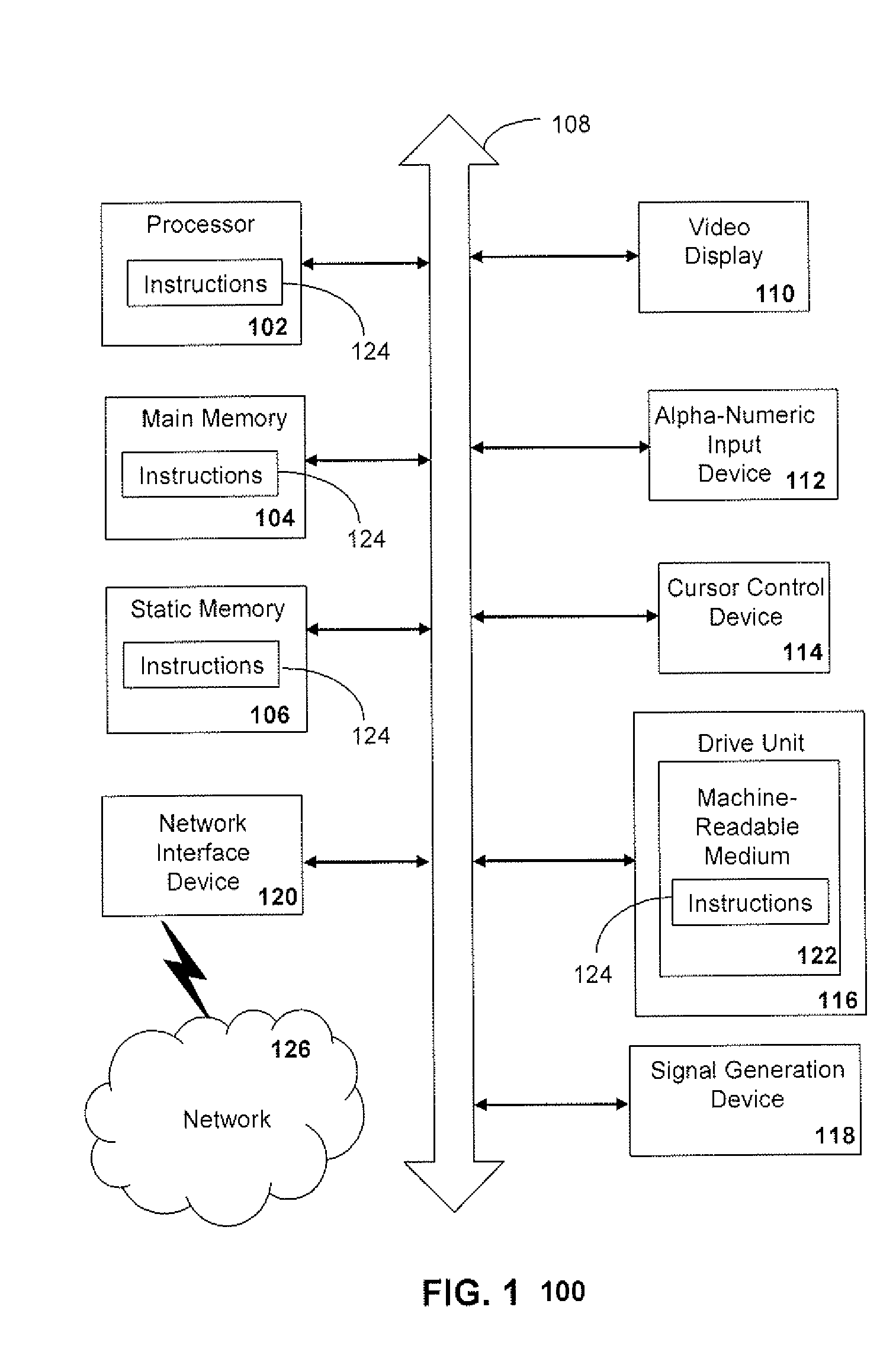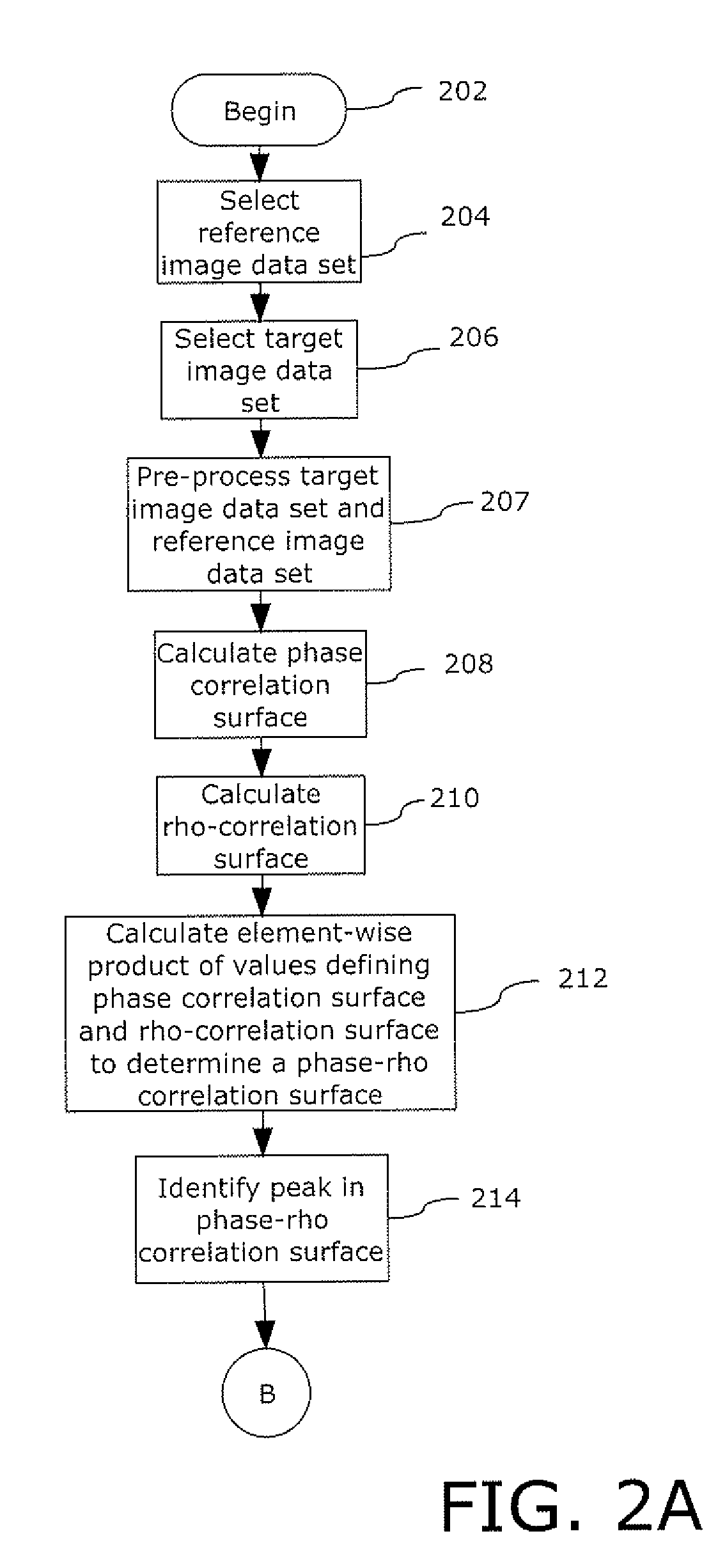Image registration using rotation tolerant correlation method
- Summary
- Abstract
- Description
- Claims
- Application Information
AI Technical Summary
Benefits of technology
Problems solved by technology
Method used
Image
Examples
Embodiment Construction
[0018]The inventive arrangements concern a new correlation technique that can be used to determine the degree of similarity between data sets. It can be used for applications similar to those in which a normalized cross-correlation or other correlation methods are conventionally used. However, the new correlation technique described herein has unique advantages over each of these conventional methods. One such advantage is a relative insensitivity to rotational variations as are known to occur when attempting to register image data. Another advantage is better performance in cross-sensor registration.
[0019]More particularly, since the correlation technique described herein is relatively insensitive to rotation such as between two images to be registered, it can be advantageously used to find the transformation between images under rotation. The technique is particularly useful for rotations in excess of 3 degrees, where other correlation techniques are known to exhibit relatively po...
PUM
 Login to View More
Login to View More Abstract
Description
Claims
Application Information
 Login to View More
Login to View More - R&D
- Intellectual Property
- Life Sciences
- Materials
- Tech Scout
- Unparalleled Data Quality
- Higher Quality Content
- 60% Fewer Hallucinations
Browse by: Latest US Patents, China's latest patents, Technical Efficacy Thesaurus, Application Domain, Technology Topic, Popular Technical Reports.
© 2025 PatSnap. All rights reserved.Legal|Privacy policy|Modern Slavery Act Transparency Statement|Sitemap|About US| Contact US: help@patsnap.com



